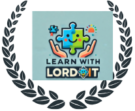Introduction
Learning can be challenging for kids with learning difficulties such as dyslexia, autism, ADHD, AND Speech delays. However, traditional learning methods may not always be practical. The key is to make learning fun, engaging, and stress-free.
In my work with learners over the years. I thought it would be helpful to share these with parents and caregivers to
Why Fun Learning Matters to Kids with Learning Difficulties
Children with learning challenges often struggle with attention, memory, and the ability to process information but when learning is turned into a playful and engaging experience, they:
. Stay focus longer and motivated
. Gain confidence in their abilities
. Retain information better
. Develop problem-solving skills and critical thinking
Setting up a conducive learning environment at home
Create a dedicated learning space
A well-organised, free learning space can improve focus. Choose a quiet corner with good lighting, a comfortable seat, and minimal distractions.
Use the following:
- Visual schedules
- Noise cancelling head phones
- Color-coded storage for easy access to learning materials
2. Use Multisensory Learning Approaches
. Visuals ( pictures, videos, flashcards)
. Auditory( song, rhymes, story books)
. Hands-on (movement-based leaning activities)
Engaging Learning Activities for Different Subjects
Reading and language development
a) Story-based learning: instead of traditional reading, make stories interactive by:
. using puppets or role playing
. Acting out scenes from a book
. creating Diy storyboards
b) Sight Word Games:
. Flashcard scavenger hunt: Hide flashcards around the house and let the child find and read them.
. Hopscotch spelling: Write words on the ground and have kids jump to spell them
c) Speech and Communication Activities
. Use picture cards to encourage speech
. play ”guess the sound” using household items
. Encourage singing and rhyming games
2. Math Made Fun
a) Everyday math activities
. cooking and measuring ingredients together
. Grocery shopping: count items, compare prices, and estimate total costs
. Sorting and matching: group toys by color, shapes and sizes
b) Hands-on math Games
. Number hop: write numbers on the ground and call out sums for kids to jump on the correct answer
. Dice games: roll dice and add/subtract numbers
3. Science and Exploration Activities
a) Simple Home Science Experiment
. Baking soda and vinegar volcano
. floating and sinking objects in water
. Ice melting race to learn about temperature
b) nature based learning
. Gardening: teach plant growth and responsibility
. Outdoor scavenging hunt: identify leaves, insects, and rocks
4. Art and Creativity Boosters
a) Diy Sensory Arts Projects
. finger painting for fine motor
. A sand or rice tray for tracing letters and numbers
. Playdough modelling for creativity and strengthening of fine musles
b) music and dance learning
. use songs to teach numbers and letters
. Encourage movement-based learning with dance routines
. make DIY musical instruments to explore rhymes and sounds
5. physical and movement-based learning
Children with ADHD or sensory needs may benefit from movement-integrated learning like
. Yoga for kids to improve focus and relaxation, and body awareness
. Obstacle courses challenge with learning cues ( e.g answer a question before moving to the next step )
. Jump rope spelling and number counting. this helps with memorisation and coordination
Using Technology and Educational Apps
Best apps for learning disabilities
. endless reader ( for learning and spelling)
. ABC Mouse ( interactive learning across subjects)
. Khan Academy kids ( Educational videos and quizzes of various skill )
. Proloquo2Go ( a communication app for non-verbal children)
How to use screen time wisely
. limit passive screen time and encourage interactive learning
. Schedule breaks between screen sessions
. Combine screen learning with hands-on activities and reinforce concepts through physical activities
Encourage a growth mindset
- Praise efforts over results, so instead of focusing on mistakes, highlight progress and effort. For example, I love how you tried to solve the problem and didn’t give up! That’s amazing
- Allow mistakes as learning opportunities; teaching kids that making mistake is part of learning will go a long way to encourage them. use words like reflect again, try again, et c
- set small achievable goals; break down tasks into manageable steps, and celebrate small wins to build confidence.
Making learning fun at home is possible with the right approach, such as integrating interactive, sensory-rich, and hands-on activities, so that children with learning difficulties can develop skills in a way that feels natural and enjoyable.
Try incorporating these activities into your daily routine and watch how your child’s confidence and love for learning grow

https://honda-fit.ru/forums/index.php?autocom=gallery&req=si&img=6933